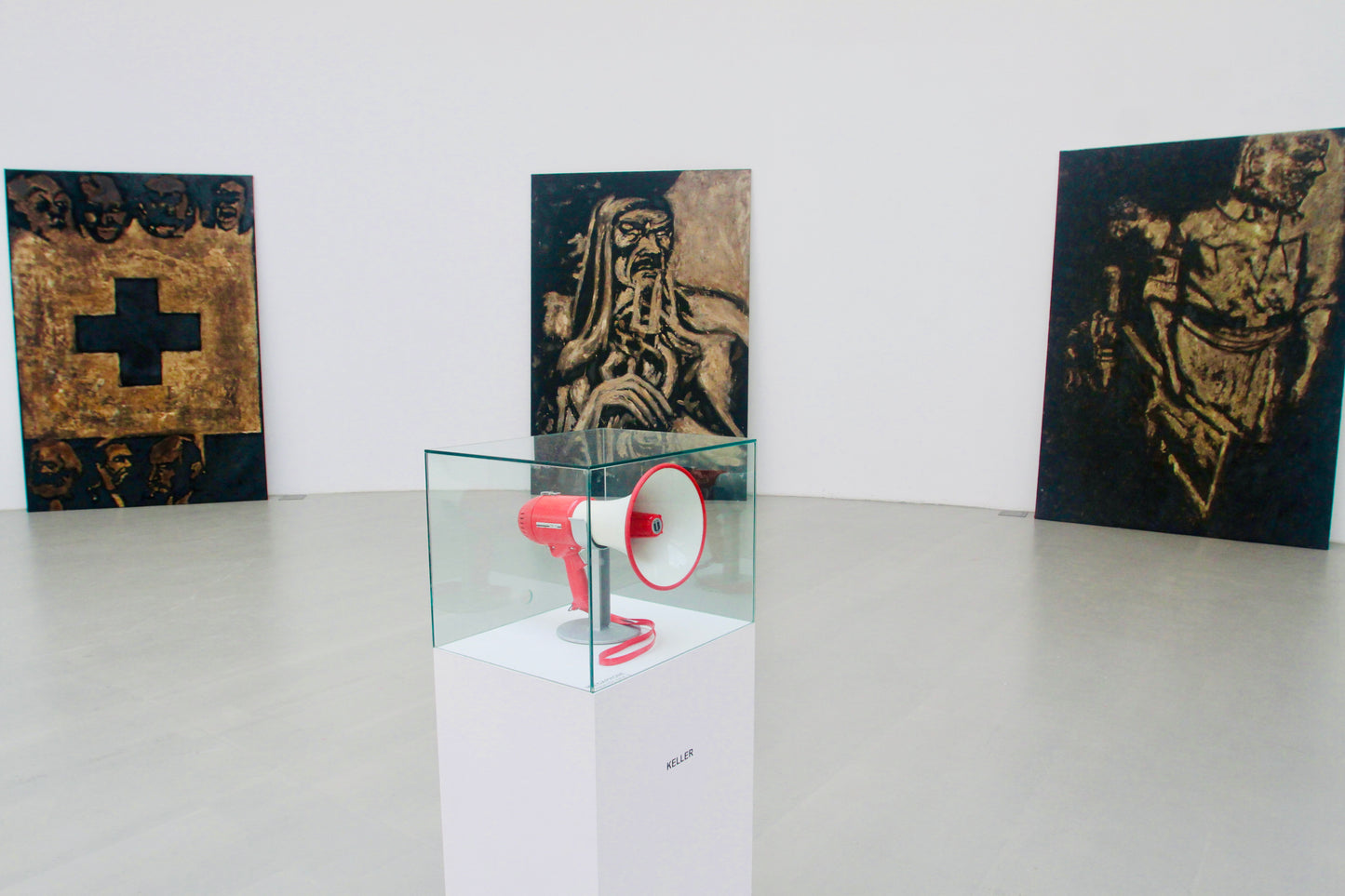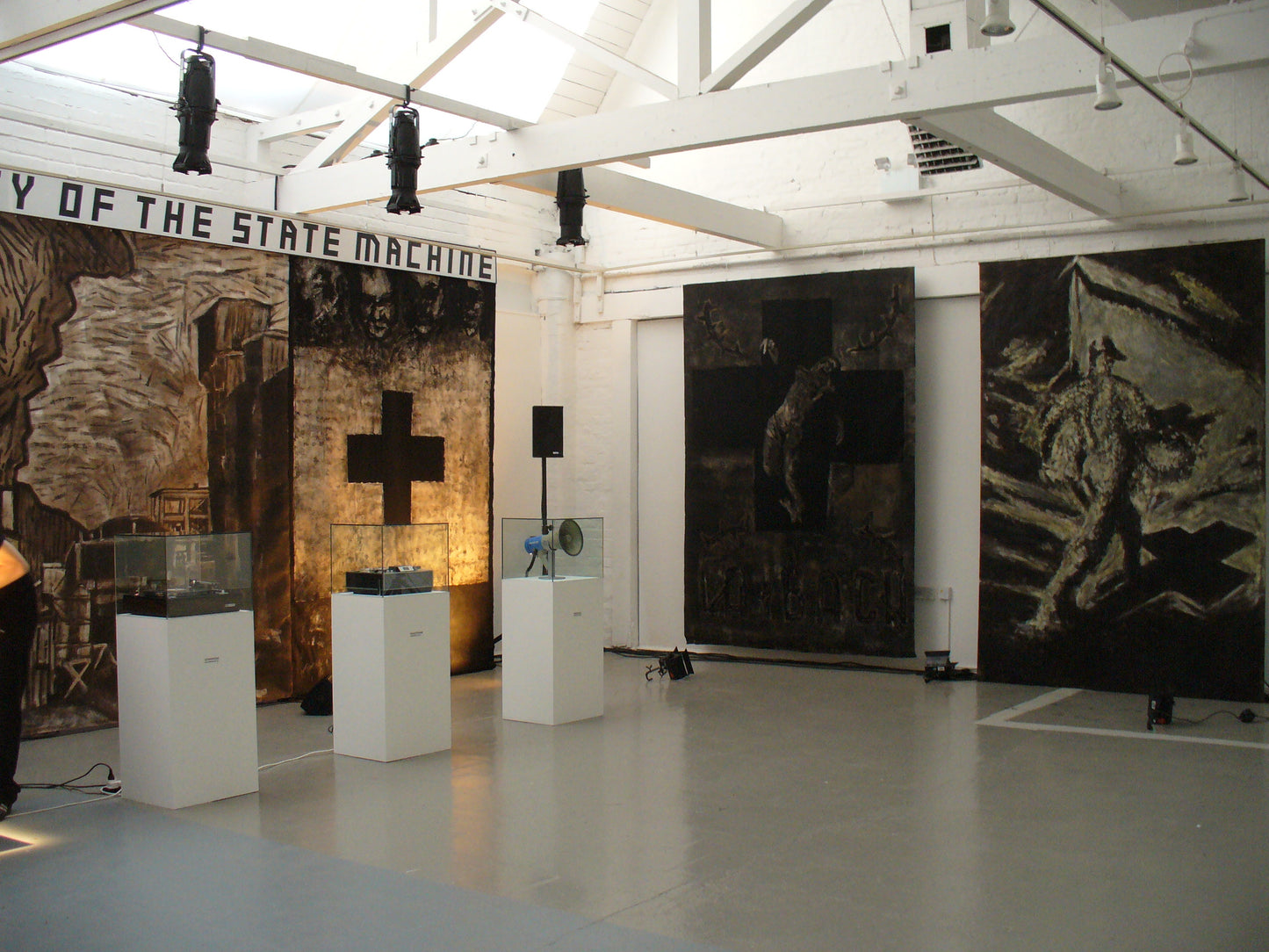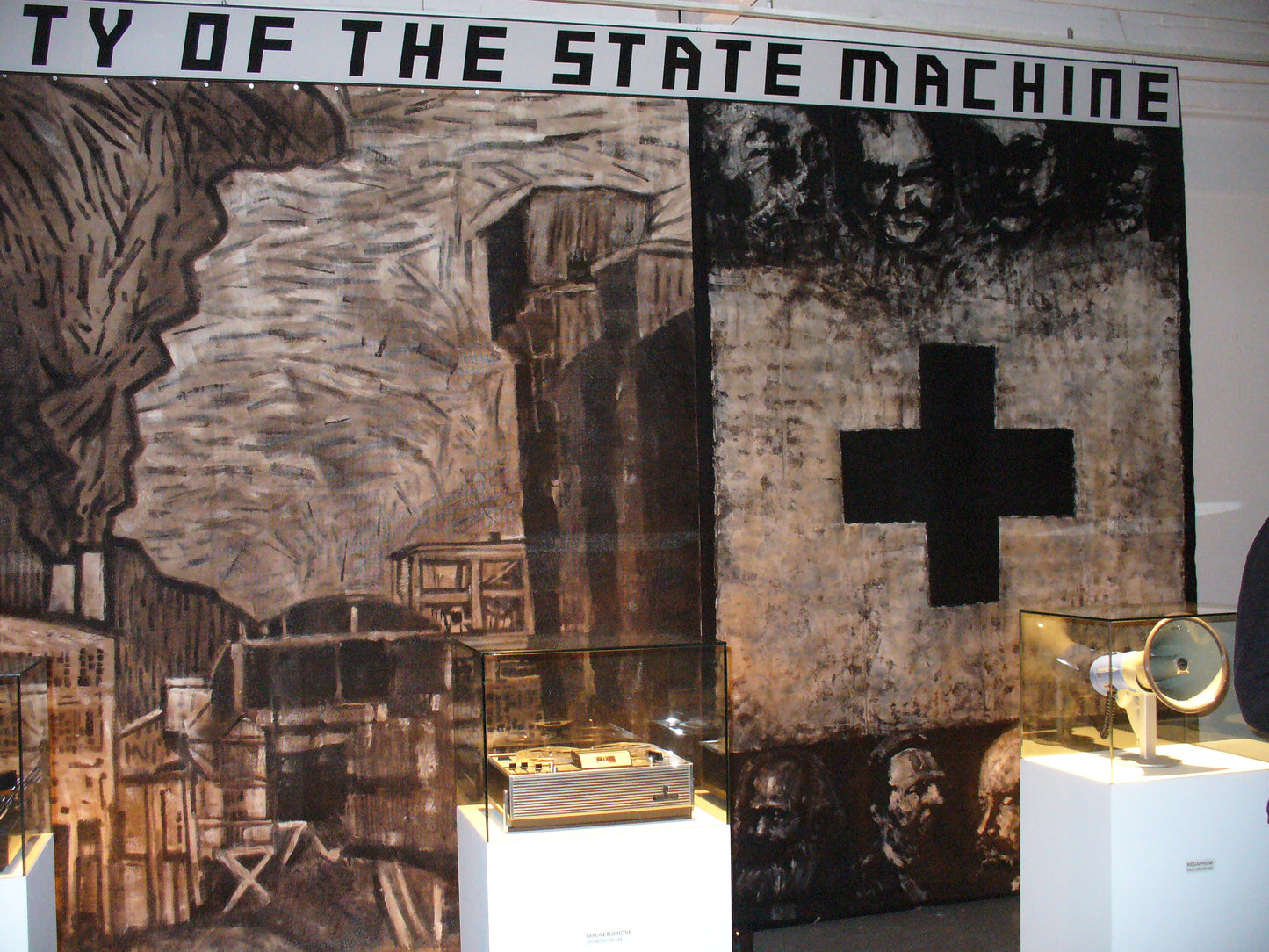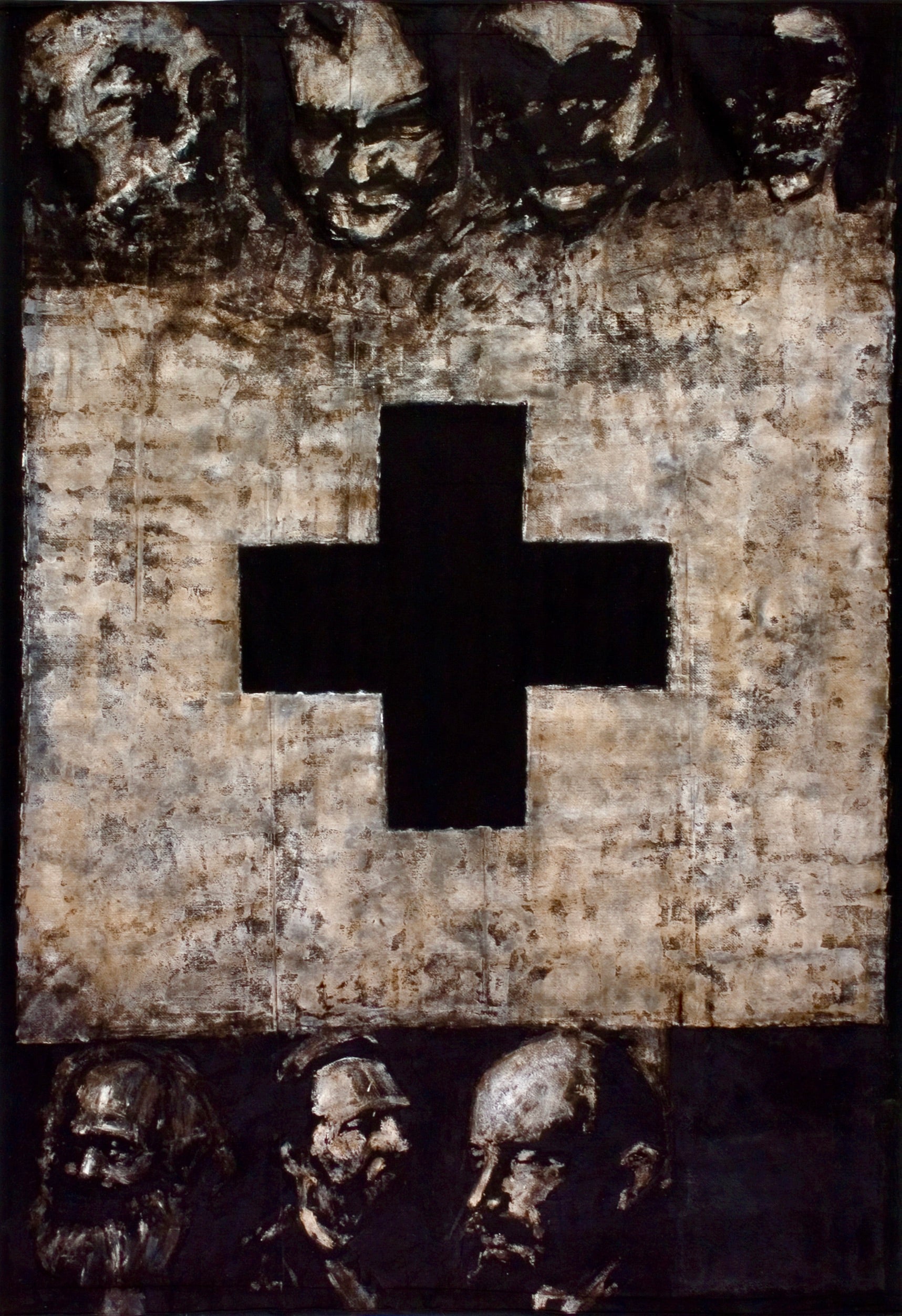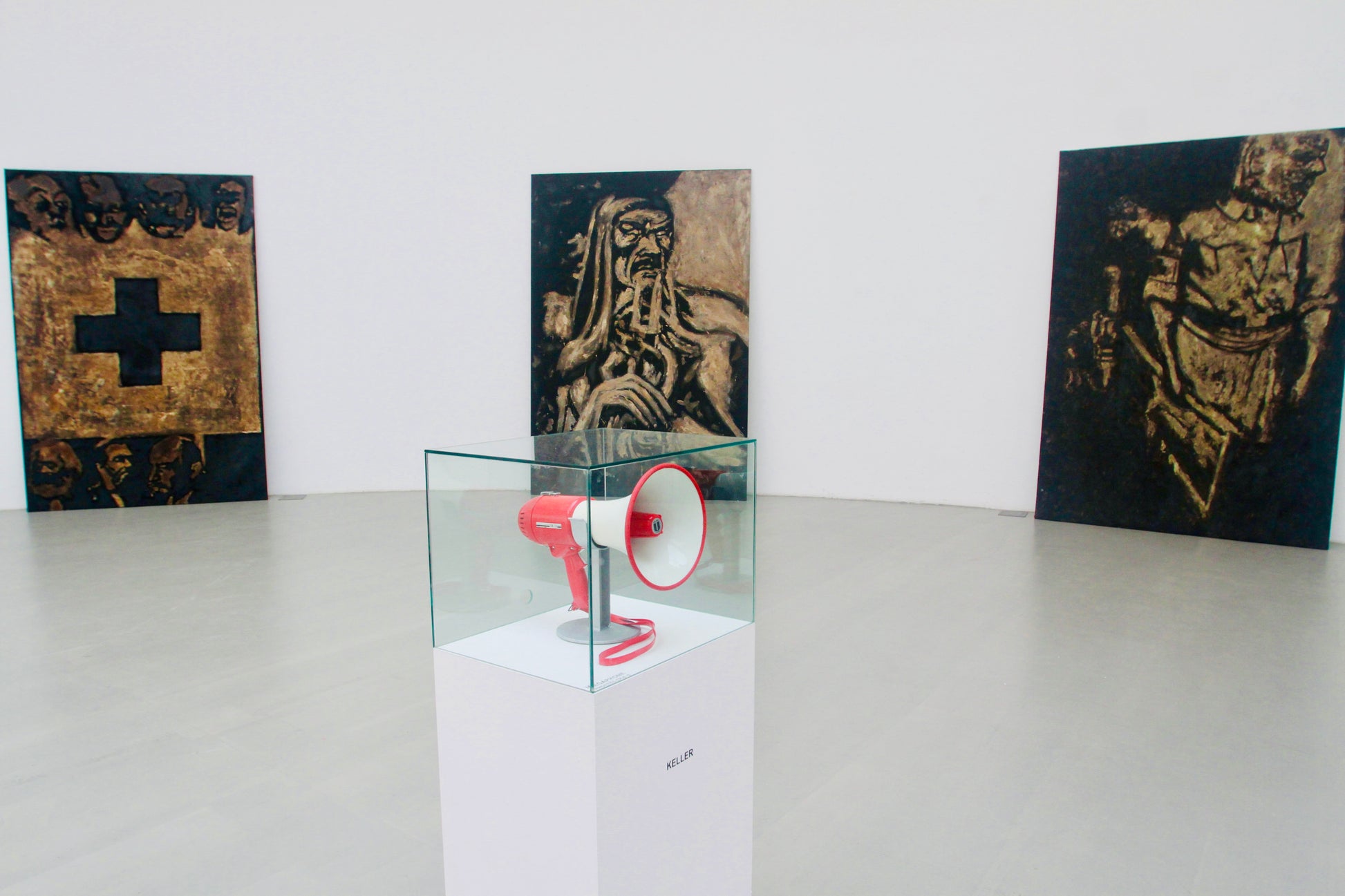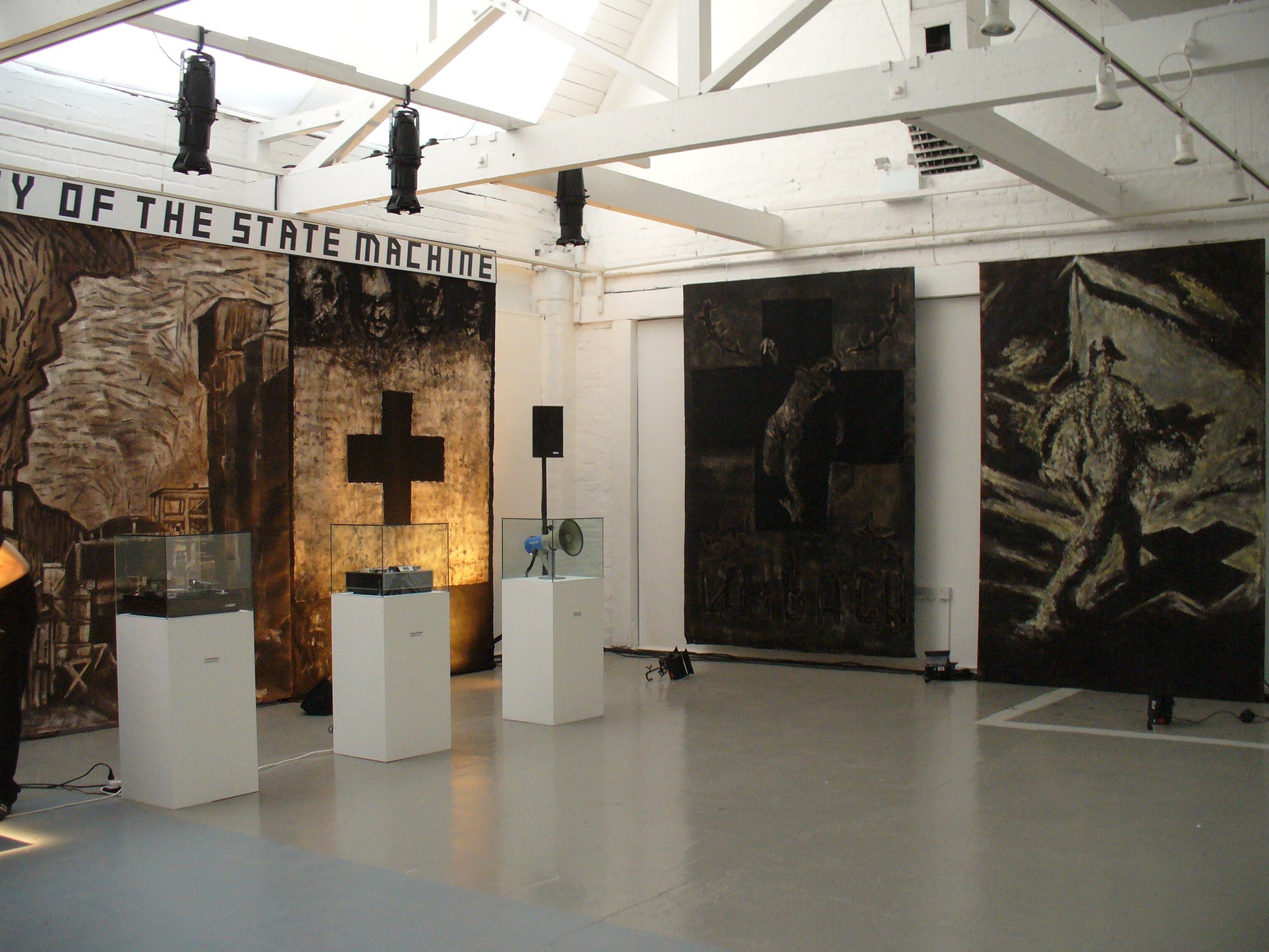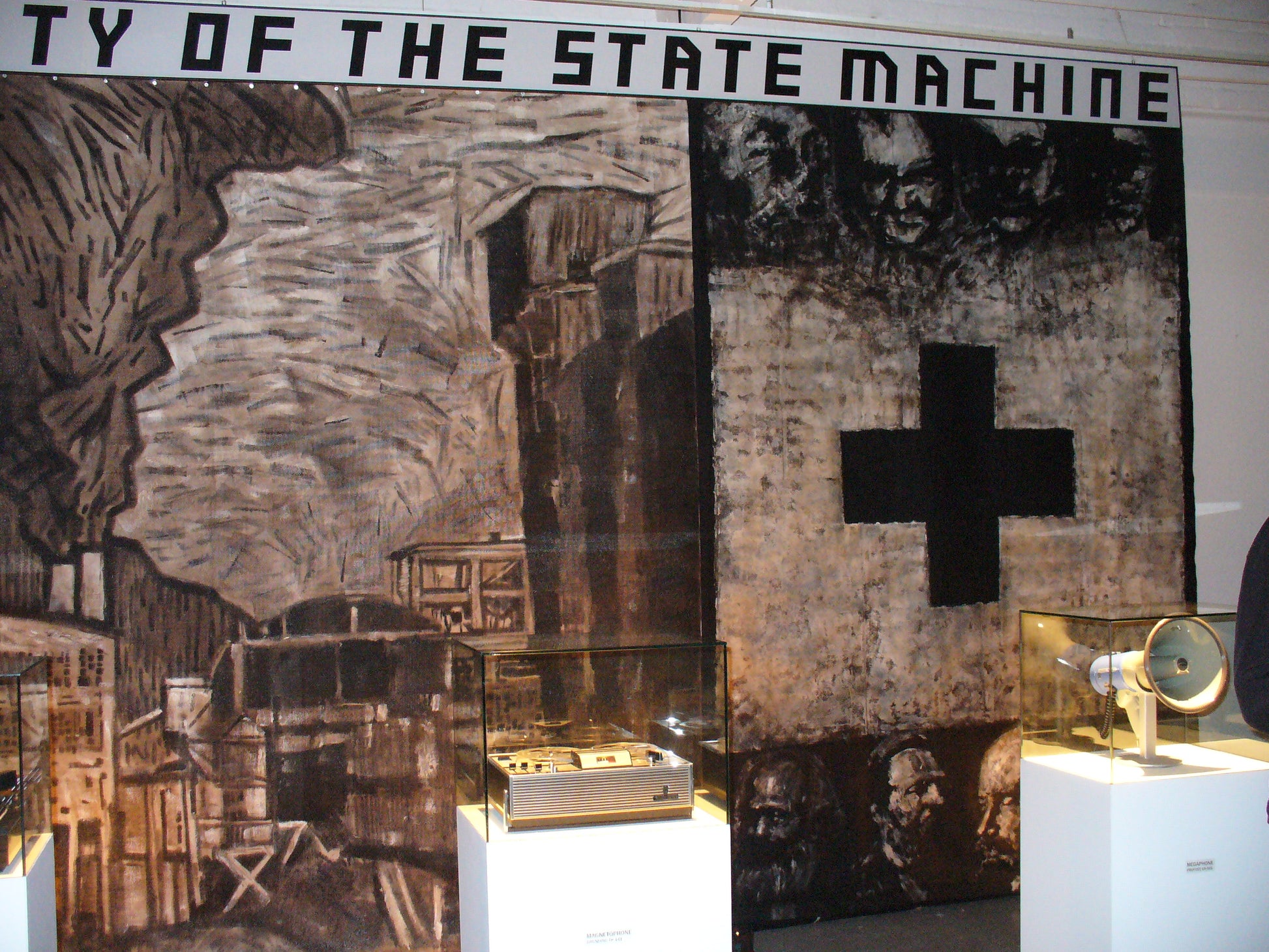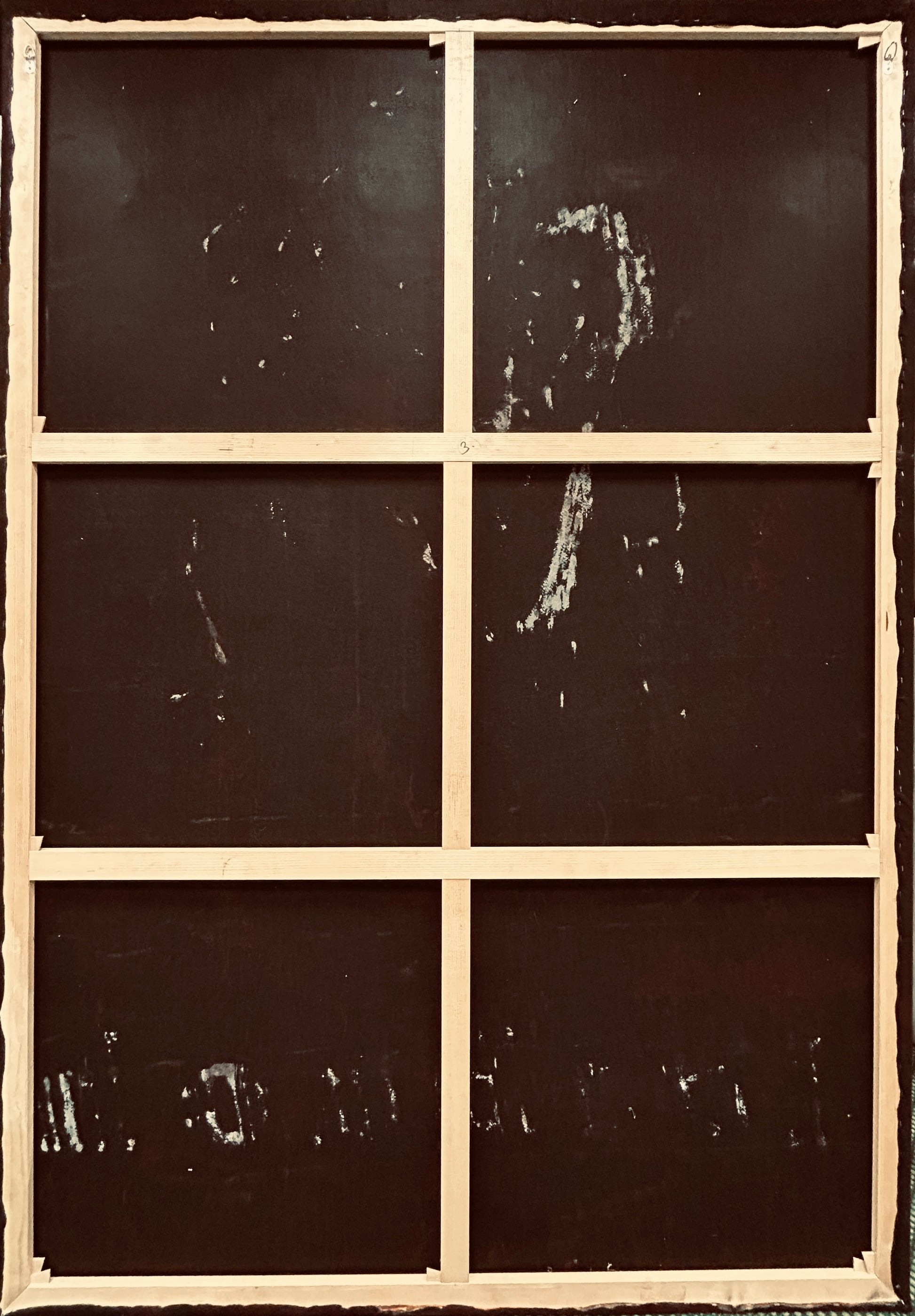Laibach WTC
THE DEATH OF IDEOLOGY
1982/2009, acrylic on felt canvas, 280 x 195 cm
Unique work
Couldn't load pickup availability
Instrumentality of the State Machine – The Death of Ideology, painted, signed, and stamped by Laibach
This is an enlarged interpretation of the black and white Laibach poster from 1982.
In the upper part of the picture are portraits of four anonymous mortals, representing the four symbolic, pseudonymous, members of Laibach named Eber, Saliger, Dachauer and Keller. The names are borrowed from the four regime painters of the Third Reich, practitioners of the ideological art of engineering human souls. The four portraits are inspired by the works of the Austrian neo-expressionist painter Arnulf Rainer, and also by George E. Romero's 1968 film, "Night of the Living Dead". a film which depicts contemporary consumer society as an epidemic of ideological cannibalism, in which the dead are never really dead, and return again and again among the living (or more specifically, to roam the department stores of capitalism).
At the bottom are portraits of three classic figures of Marxism: Marx, Engels and Lenin. In communist countries, the fourth place for a portrait was reserved for a current local leader, such as Stalin, Mao Zedong, Kim Il Sung or J. B. Tito. Since the poster was created shortly after Tito's death in 1980, this space was left empty, a black rectangle symbolically waiting for him to perhaps 'rise' from the dead.
In the centre of the picture stands the Laibach's symbol - the cross, which also adds up and evens out the differences.
The present painting itself was created in 2008–2009 as part of a larger installation, entitled “Instrumentality of the State Machine”, which Laibach first presented in this setting in 2009 at their extensive retrospective exhibition “AUSSTELLUNG! LAIBACH KUNST – RECAPITULATION”, at the Muzeum Sztuki Gallery of Modern Art in Łódź, Poland, and later as well in an exhibition in Zagreb, at Dom HDLU 2011, entitled “AUSSTELLUNG! LAIBACH KUNST – Ceci n'est pas Malevich”.
Created by members of Laibach, signed with four names (Eber, Saliger, Dachauer and Keller), and stamped with the group's emblem as well as their collective signature.
Terms and details:
Upon prior request, it is possible to view artwork live at a Laibach WTC location in Ljubljana, Slovenia. If you are interested in doing so, please write to wtc.support@laibach.org.
The listed price includes 9,5% value-added tax (VAT). If you are located outside the EU, or are a legal entity that is part of EU reverse charge system, you may take this into account when submitting your offer.
The stated purchase price is valid upon collection at a Laibach WTC location in Ljubljana and does not include the shipping, insurance, customs and excise charges, or import / export fees. After the payment for the artwork will be received, the Laibach WTC team will contact the buyer regarding collection or shipping.
Upon prior agreement with the buyer, and at the buyer’s expense, Laibach WTC can arrange shipping and possible insurance of the item. The shipping fee will depend on the location of the buyer and the size and weight of the item. When exporting artwork outside the EU, Laibach WTC will also prepare the necessary documentation for export customs clearance, but the buyer will be responsible for the payment the customs and excise and export / import fees.
For all other issues, the Terms of service of the Laibach WTC online store apply.
Laibach first presented the motifs of the Red Districts in 1980 at the Delavski dom (Workers' Home) culture centre in Trbovlje – at an exhibition that never took place (because it was banned by the local municipal authorities). Subsequently, Laibach presented the same motifs at their first exhibitions in Belgrade (Srećna galerija, 1981), Ljubljana (ŠKUC Gallery, 1982), and Zagreb (PM Gallery, 1983).
In the following decades, the group showed various variations of the Red Districts in some of their major exhibitions. In 2009, eight motifs were printed on aluminium plates and presented at retrospectives of their visual work in Łódź (Muzeum Sztuki, 2009), Maribor (UGM, 2011), Zagreb (HDLU, 2011), as well as in Olomouc (Galerie Caesar, 2016) and some other galleries.
The original linocuts represent historical motifs from the so-called Red Districts, as the industrial basin of Slovenia in the Zasavje region is called, which encompasses the towns of Trbovlje, Zagorje, and Hrastnik, i.e. the environmental area where the band Laibach were formed in 1980. These ‘industrial’ motifs became part of the basic aesthetic content of Laibach, which never denied their industrial-cultural origins, and after the formal establishment of the broader umbrella art formation Neue Slowenische Kunst (1984–1992), these motifs were adopted and appropriated from Laibach by other NSK groups, most notably by the Irwin painting group.
Share

